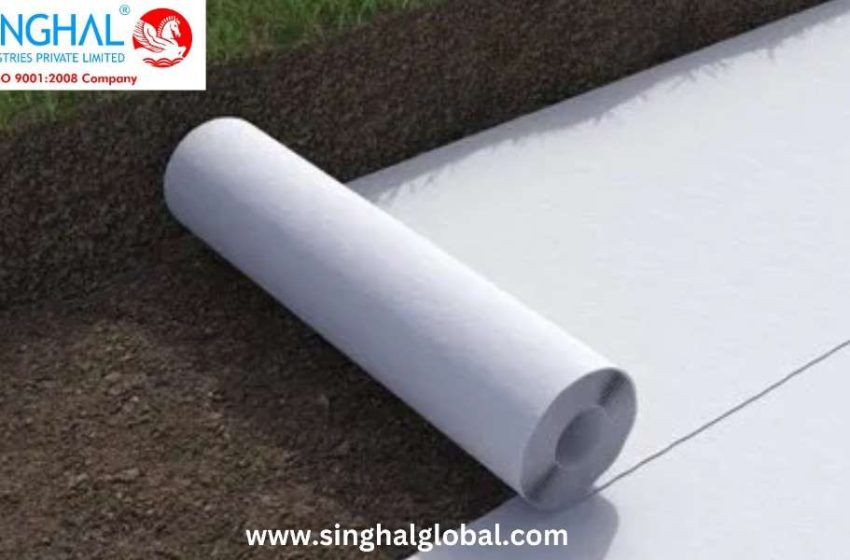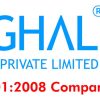Geotextile Sheets for Green Roofs: Enhancing Urban Sustainability

Introduction
As urban areas continue to expand, the challenge of maintaining ecological balance grows increasingly complex. One innovative solution gaining traction is the integration of green roofs into urban infrastructure. These living roofs not only provide aesthetic benefits but also offer environmental advantages, such as reducing urban heat, improving air quality, and enhancing biodiversity. Central to the effectiveness of green roofs is the use of geotextile sheets, which play a crucial role in their design and functionality. This article explores the importance of geotextile sheets in green roofs and how they contribute to urban sustainability.
Understanding Geotextile Sheets
Geotextile sheets are permeable fabrics used in various civil engineering and construction applications. Made from synthetic materials, these sheets allow water to flow through while preventing soil erosion and retaining moisture. They serve multiple functions in green roofs, such as drainage, filtration, and separation. By providing a stable base for vegetation, geotextile sheets help create an ideal environment for plant growth, thus promoting the sustainability of urban landscapes.
The Role of Geotextile Sheets in Green Roofs
Geotextile sheets serve as a critical layer in the construction of green roofs. They provide essential support for vegetation while allowing for effective drainage and water retention. These sheets help manage stormwater, which is particularly important in urban areas where impervious surfaces can lead to flooding and water pollution. By utilizing Geo textile sheet, green roofs can capture and retain rainwater, reducing the burden on urban drainage systems and promoting the natural water cycle.
Enhancing Drainage and Filtration
One of the primary functions of geotextile sheets in green roofs is to enhance drainage. Proper drainage is essential for the health of plants and the overall performance of the green roof system. The porous nature of Geotextile sheet allows excess water to drain away while retaining moisture for the plants. This balance is crucial in preventing waterlogging, which can lead to root rot and other issues.
Moreover, geotextile sheets act as a filtration layer, preventing soil particles from clogging drainage systems. This filtration capability helps maintain the integrity of the green roof and ensures that the plants receive the necessary nutrients without becoming waterlogged. The durability and permeability of geotextile sheets contribute significantly to the long-term success of green roofs.
Supporting Plant Growth
The selection of appropriate vegetation is vital for the success of green roofs, and geotextile sheets play an integral role in supporting plant growth. These sheets provide a stable substrate for plants, promoting root development and allowing for healthy vegetation. The moisture retention capabilities of geotextile sheets create an optimal environment for various plant species, from sedums to grasses and wildflowers.
In addition to providing structural support, geotextile sheets can also enhance soil aeration. This increased aeration improves root health and overall plant vigor. The combination of moisture retention, drainage, and aeration creates an ideal microclimate for plants, contributing to the aesthetic and environmental benefits of green roofs.
Cost Considerations: Geotextile Sheet Price
When planning for a green roof, cost considerations are paramount. The geotextile sheet price can vary based on several factors, including material type, thickness, and manufacturer. While initial investment costs may seem high, the long-term benefits of installing geotextile sheets in green roofs can outweigh these expenses.
Investing in quality geotextile sheets can lead to enhanced durability and performance, ultimately reducing maintenance costs over time. Moreover, the environmental benefits provided by green roofs, such as reduced energy consumption and improved stormwater management, contribute to cost savings in urban infrastructure. Thus, while evaluating Geotextile sheet price, it is essential to consider the broader context of long-term sustainability and environmental impact.
Environmental Benefits of Green Roofs
The integration of geotextile sheets into green roofs significantly contributes to urban sustainability. These roofs help mitigate the urban heat island effect, a phenomenon where urban areas experience higher temperatures than surrounding rural areas due to human activities and land use changes. Green roofs provide a cooling effect, reducing energy consumption for air conditioning and improving overall urban climate.
Additionally, green roofs contribute to improved air quality by filtering pollutants and carbon dioxide from the atmosphere. The vegetation absorbs harmful gases, while the geotextile sheets facilitate the retention of rainwater, preventing pollutants from entering stormwater systems. This dual-action helps protect local waterways and contributes to healthier urban ecosystems.
Promoting Biodiversity
Biodiversity is a critical component of sustainable urban environments. Green roofs, supported by geotextile sheets, can serve as habitats for various plant and animal species, promoting ecological diversity in urban settings. By creating green spaces in otherwise sterile environments, these roofs can attract pollinators, birds, and other wildlife, enhancing urban ecosystems.
Moreover, the selection of native plants for green roofs can further support local biodiversity. Native species are often more resilient and require less maintenance, making them ideal candidates for green roof installations. By fostering biodiversity, green roofs contribute to the overall health and sustainability of urban areas.
Challenges and Solutions
While the benefits of using geotextile sheets in green roofs are numerous, there are challenges to consider. Issues such as installation difficulties, maintenance requirements, and potential plant selection problems can arise. However, these challenges can be addressed through proper planning and implementation.
Selecting the right geotextile sheets and ensuring proper installation are crucial steps in overcoming these challenges. Collaborating with experienced professionals can help mitigate potential problems and ensure that the green roof functions as intended. Regular maintenance, including plant care and monitoring of drainage systems, will further enhance the longevity and performance of the green roof.
Conclusion
Geotextile sheets are essential components of green roofs, playing a pivotal role in enhancing urban sustainability. By providing effective drainage, filtration, and support for plant growth, these sheets contribute to the overall success of green roofs. Despite the initial costs associated with geotextile sheet installation, the long-term environmental benefits, such as improved air quality, reduced urban heat, and increased biodiversity, make them a worthwhile investment.
As urban areas continue to grow, the need for sustainable solutions becomes more critical. Green roofs, supported by geotextile sheets, offer a promising path toward enhancing urban sustainability and promoting ecological balance. By embracing this innovative approach, cities can create healthier, more resilient environments for future generations.
FAQs About Geotextile Sheets for Green Roofs
1. What are geotextile sheets?
Geotextile sheets are permeable fabrics made from synthetic materials that are used in various civil engineering applications. In green roofs, they provide drainage, filtration, and support for plant growth.
2. How do geotextile sheets enhance green roofs?
Geotextile sheets help manage water flow, prevent soil erosion, and retain moisture for plants. They provide a stable substrate for vegetation, promote healthy root development, and prevent clogging of drainage systems.
3. What is the average geotextile sheet price?
The price of geotextile sheets can vary widely based on factors such as material type, thickness, and brand. It’s essential to evaluate the cost in the context of long-term benefits and sustainability rather than just the upfront expense.

